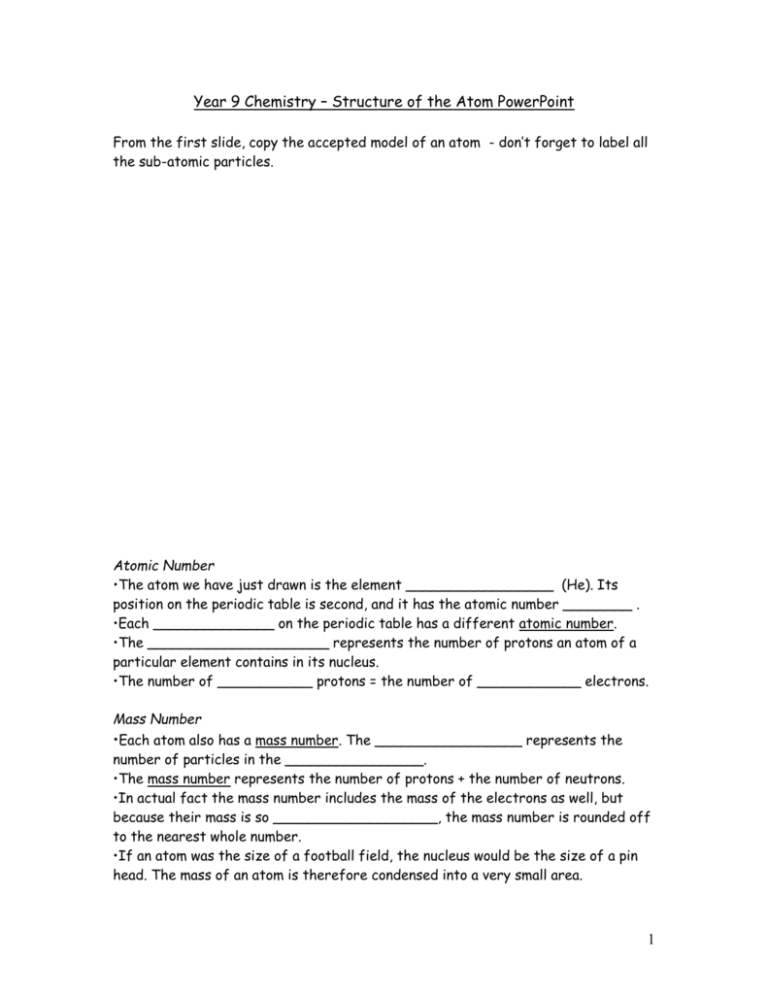Atomic Number
advertisement

Year 9 Chemistry – Structure of the Atom PowerPoint From the first slide, copy the accepted model of an atom - don’t forget to label all the sub-atomic particles. Atomic Number •The atom we have just drawn is the element _________________ (He). Its position on the periodic table is second, and it has the atomic number ________ . •Each ______________ on the periodic table has a different atomic number. •The _____________________ represents the number of protons an atom of a particular element contains in its nucleus. •The number of ___________ protons = the number of ____________ electrons. Mass Number •Each atom also has a mass number. The _________________ represents the number of particles in the ________________. •The mass number represents the number of protons + the number of neutrons. •In actual fact the mass number includes the mass of the electrons as well, but because their mass is so ___________________, the mass number is rounded off to the nearest whole number. •If an atom was the size of a football field, the nucleus would be the size of a pin head. The mass of an atom is therefore condensed into a very small area. 1 Working out how many neutrons •We can work out the number of neutrons if we know the ________________ number and _____________________ number. •Helium has 2 protons (atomic number) and 4 particles in the nucleus, so therefore 4 (neutrons+protons) - 2 (protons) = 2 (neutrons). 4 2 He How many protons, neutrons and electrons in these atoms? Write your answers underneath. Isotopes An _________________ of an atom has the same number of _____________ with a different number of neutrons. Draw the ‘Ordinary’ Hydrogen atom and the two possible isotopes. 2 Carbon - 14 is radioactive and used for dating archaeological wood up to 20,000 years old. This isotope of carbon can be represented as such: 14 6 C Draw a labeled model of the Carbon – 14 isotope. Ions •If an atom looses and _______________it becomes a positive ion. •If an atom gains an electron it becomes a _____________________ ion. •An ion is an atom with a _________________ or negative charge. Draw a diagram to show how Hydrogen can loose an electron to become H+. 3






